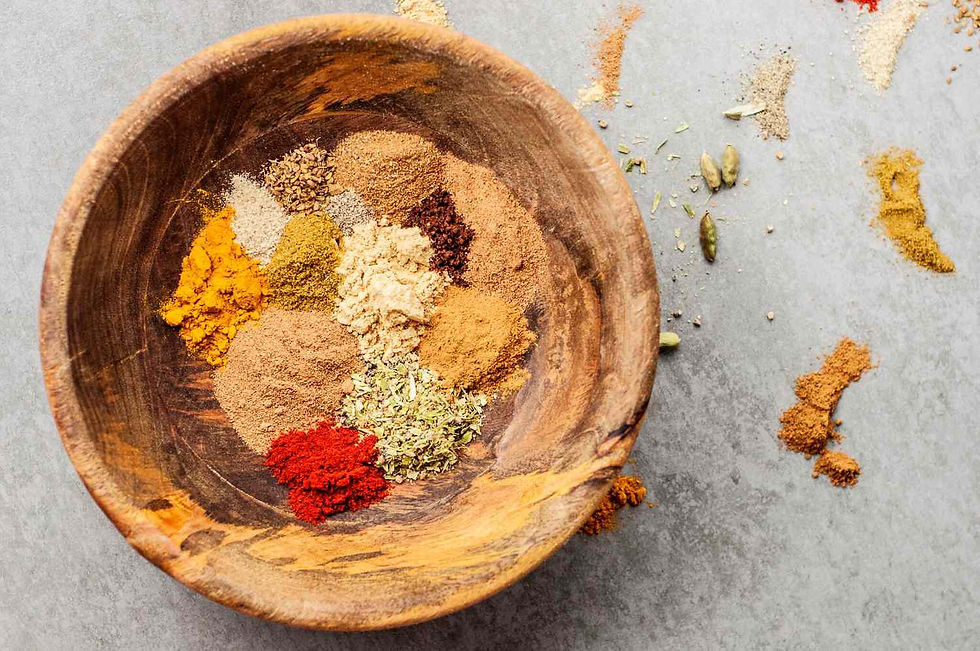Essential Indian Spices: The Base of Flavorful Dishes
- tasteafroindia
- Dec 9, 2023
- 2 min read
1. Turmeric: The Golden Heart of Indian Cuisine

Turmeric, the quintessential spice of India, is a staple in every kitchen across the country. Its vibrant golden hue and earthy aroma are inseparable from the rich flavors of Indian dishes. Turmeric's culinary versatility is remarkable, seamlessly blending into both savory and sweet preparations. In curries, it adds a depth of flavor and a touch of warmth, while in desserts, it lends a subtle golden glow and earthy notes to traditional sweets like jalebi and halwa.
2. Cumin: The Earthy All-Star

Cumin, with its warm, nutty aroma and slightly bitter taste, is another indispensable spice in Indian cuisine. It plays a starring role in a variety of dishes, from aromatic curries to spicy pickles. Cumin's earthy undertones harmonize with the vibrant flavors of other spices, creating a harmonious balance in Indian cooking.
3. Cardamom: The Fragrant Whisper of Elegance

Cardamom, the queen of spices, is prized for its delicate aroma and a sweet, slightly citrusy flavor. It adds an air of elegance and sophistication to Indian desserts, beverages, and even savory dishes. Cardamom's unique flavor profile pairs beautifully with the sweetness of fruits, the richness of nuts, and the warmth of spices like ginger and cloves.
4. Chili Peppers: The Fiery Spirit

Chili peppers, with their fiery heat and vibrant colors, are the embodiment of Indian cuisine's boldness. They add a tantalizing kick to curries, stir-fries, and even sweet dishes like chutneys and pickles. The level of spiciness varies depending on the type of chili pepper used, but all chilies bring a touch of excitement and intensity to Indian cuisine.
5. Coriander: The Fresh, Refreshing Ally

Coriander, with its bright, citrusy flavor and fresh, herbaceous aroma, is a refreshing addition to Indian cuisine. It acts as a counterbalance to the heat of chili peppers and the earthiness of spices like cumin and turmeric. Coriander leaves are often used as a garnish, while coriander seeds are ground into powder and used in curries, chutneys, and marinades.
6. Mustard Seeds: The Crackling Crunch

Mustard seeds, with their pungent aroma and nutty flavor, bring a unique texture and flavor to Indian dishes. They are often toasted and popped, adding a delightful crackling sound to dishes like dal and pakoras. Mustard seeds can also be ground into powder and used in curries and chutneys.
7. Garam Masala: The Soul of Indian Cooking

Garam masala, a blend of fragrant spices, is the soul of Indian cooking. It adds a warm, earthy depth and a complex aroma to a wide variety of dishes, from curries to biryanis to desserts. The specific spices used in garam masala vary from region to region, but it typically includes cardamom, cinnamon, cloves, black peppercorns, and nutmeg. Garam masala is often added towards the end of cooking to preserve its delicate flavors.


